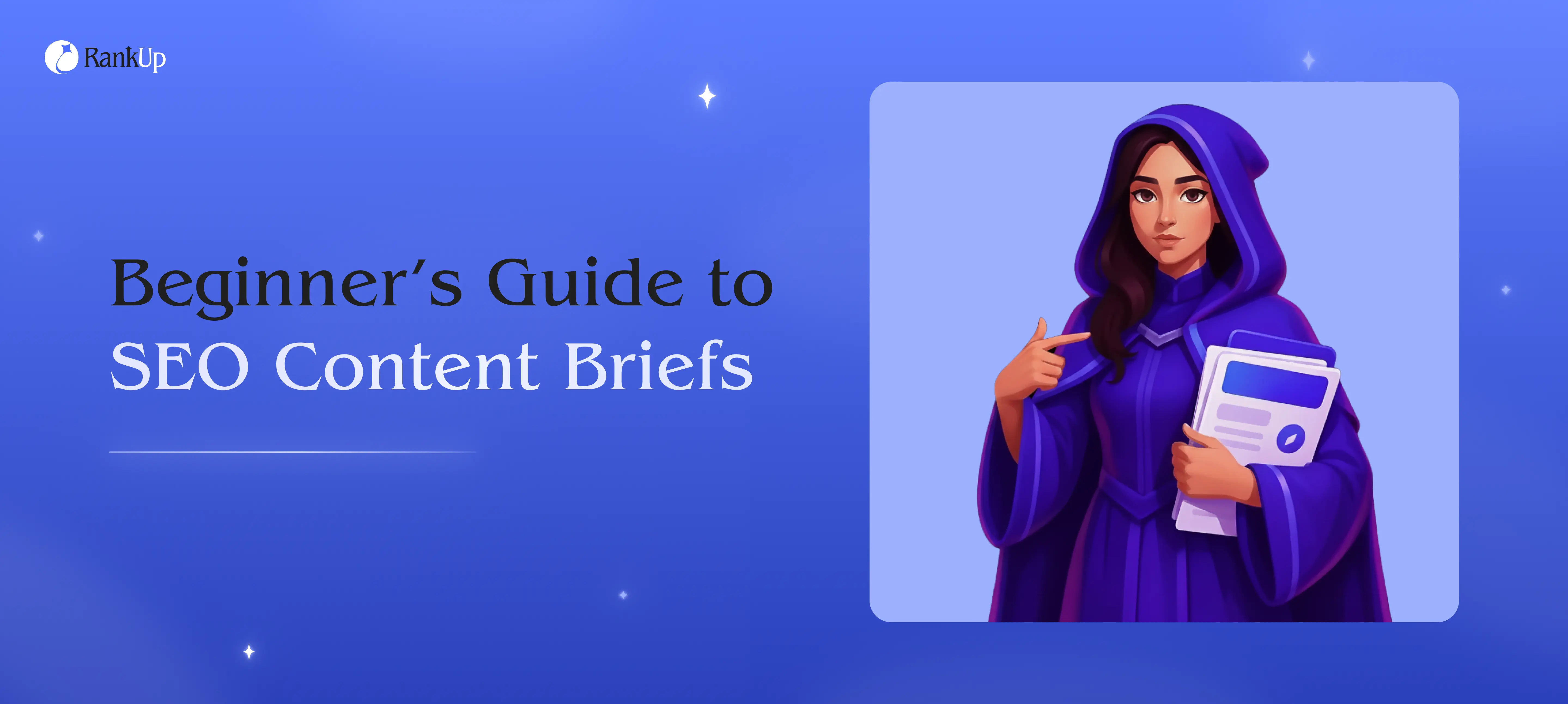
The Beginner’s Guide to SEO Content Briefs
Struggling to create content that actually ranks in Google and gets cited by ChatGPT? You're not alone.
96.55% of content published online receives zero traffic from Google. Why? Because most content is written without a strategy. SEO content briefs fix that by turning scattered keyword ideas into clear, data-backed plans that help your content rank higher and stay relevant across search and AI platforms.
In this guide, we'll walk you through what an SEO content brief is, why it matters, and the key elements of high-performing briefs that will give your content a competitive edge.
What Is an SEO Content Brief?
An SEO content brief is a document that outlines the goals, structure, and optimization requirements for writing an article. It’s basically like a blueprint for a builder.
Content brief creation methods vary across companies, but they typically include target keywords, the intended audience and search intent, a suggested heading structure or outline, tone and style guidelines, and SEO directives like meta tags and internal/external links.
SEO content briefs help align content writers and SEO strategists, ensuring the content is both useful for readers and technically optimized for search engines. In most cases, they are created by content strategists, SEO specialists, or editors for writers to follow.
While it sounds similar to a standard content outline, an SEO content brief goes much further to create a strategic recipe for success.
What Makes a Content Brief Different From a Content Outline?
A content brief is different from a content outline because it combines structure and strategy, giving writers not just what to write, but how to make it rank.
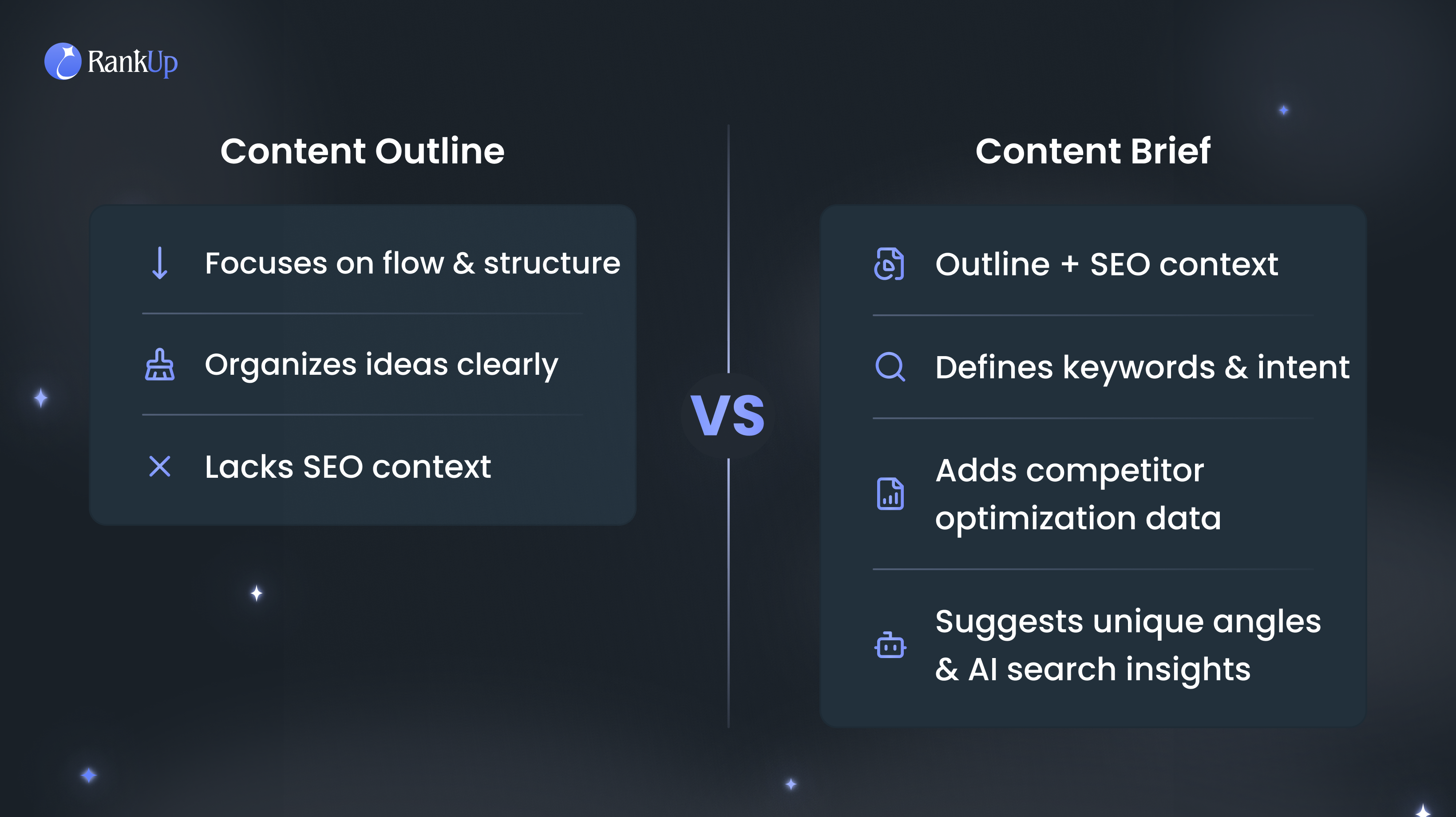 A content outline focuses on flow. It helps writers organize their ideas into sections, such as introductions, main points, and conclusions. It’s useful for keeping a piece clear and logical, but it doesn’t say much about why each part exists or what it needs to achieve in search.
A content outline focuses on flow. It helps writers organize their ideas into sections, such as introductions, main points, and conclusions. It’s useful for keeping a piece clear and logical, but it doesn’t say much about why each part exists or what it needs to achieve in search.
An SEO content brief, on the other hand, adds the missing context. It consists of a content outline, as well as:
Target keywords and their intent, so the writer understands what the audience is searching for.
Competitor insights, showing what top-performing pages cover (and what they don’t).
Optimization guidelines, such as recommended headers and internal links.
Unique angle suggestions, helping the writer create content that is more valuable than what already exists.
AI search insights, making the content more likely to appear in both Google’s AI overviews and LLMs like ChatGPT.
In short, an outline organizes ideas, while a content brief directs impact.
With an outline, you can produce a good article. However, with an SEO content brief, you can produce content that ranks, reaches your target audience, and earns visibility beyond search.
Why Are SEO Briefs Essential for Content Strategy?
SEO content briefs are essential because they help teams create purposeful, high-ranking content, speed up production, and maintain consistent quality at scale.
Here's why smart content teams never skip the brief:
They Turn Keyword Research Into Strategy
Without a brief, even strong writers can miss the mark. SEO briefs connect keywords to intent, guiding writers to focus on what readers actually want to know, not just what sounds good. This leads to content that’s useful, original, and far more likely to rank.
They Streamline The Writing Process
A good SEO brief gives writers clear direction from day one, which means fewer rewrites and faster turnaround times.
Editors spend less time explaining what went wrong and more time polishing content that's already on target. The brief serves as your quality control checkpoint before writing begins.
They Keep Quality Consistent Across Teams
Whether you're working with one freelancer or a team of twenty, everyone follows the same playbook. Your brand voice stays consistent, and your SEO strategy remains intact across every piece.
New team members can jump in quickly because the brief teaches them your standards and approach. Quality doesn't drop when you need to produce more content faster.
What Are the Key Elements of a Effective SEO Content Brief?
An effective SEO content brief includes target keywords, audience and search intent, a clear content outline, on-page SEO details, competitor analysis and unique angle suggestions, and internal/external link suggestions. Each element ensures that content is optimized for both readers and search engines while keeping writers aligned with the strategy.
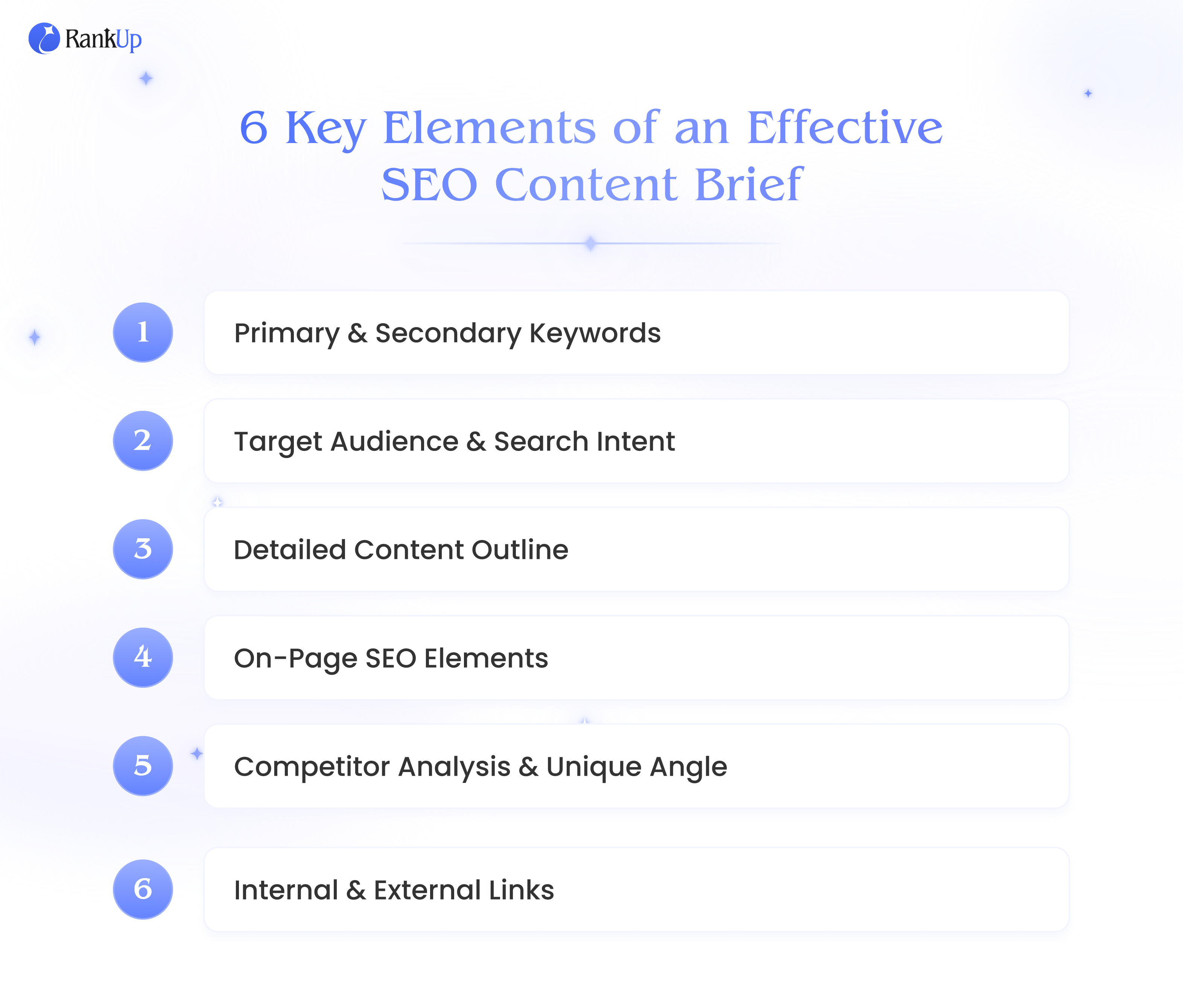 Let’s go through each of the key elements in more detail:
Let’s go through each of the key elements in more detail:
1. Primary and Secondary Keywords
A primary keyword is the main search term that defines what your content is about, while secondary keywords are related phrases that support and expand on that topic. Together, they help your content rank for a broader range of searches and show search engines that your page provides comprehensive coverage of a subject.
Your SEO content brief should always include both keyword types, but for different reasons:
Primary Keyword
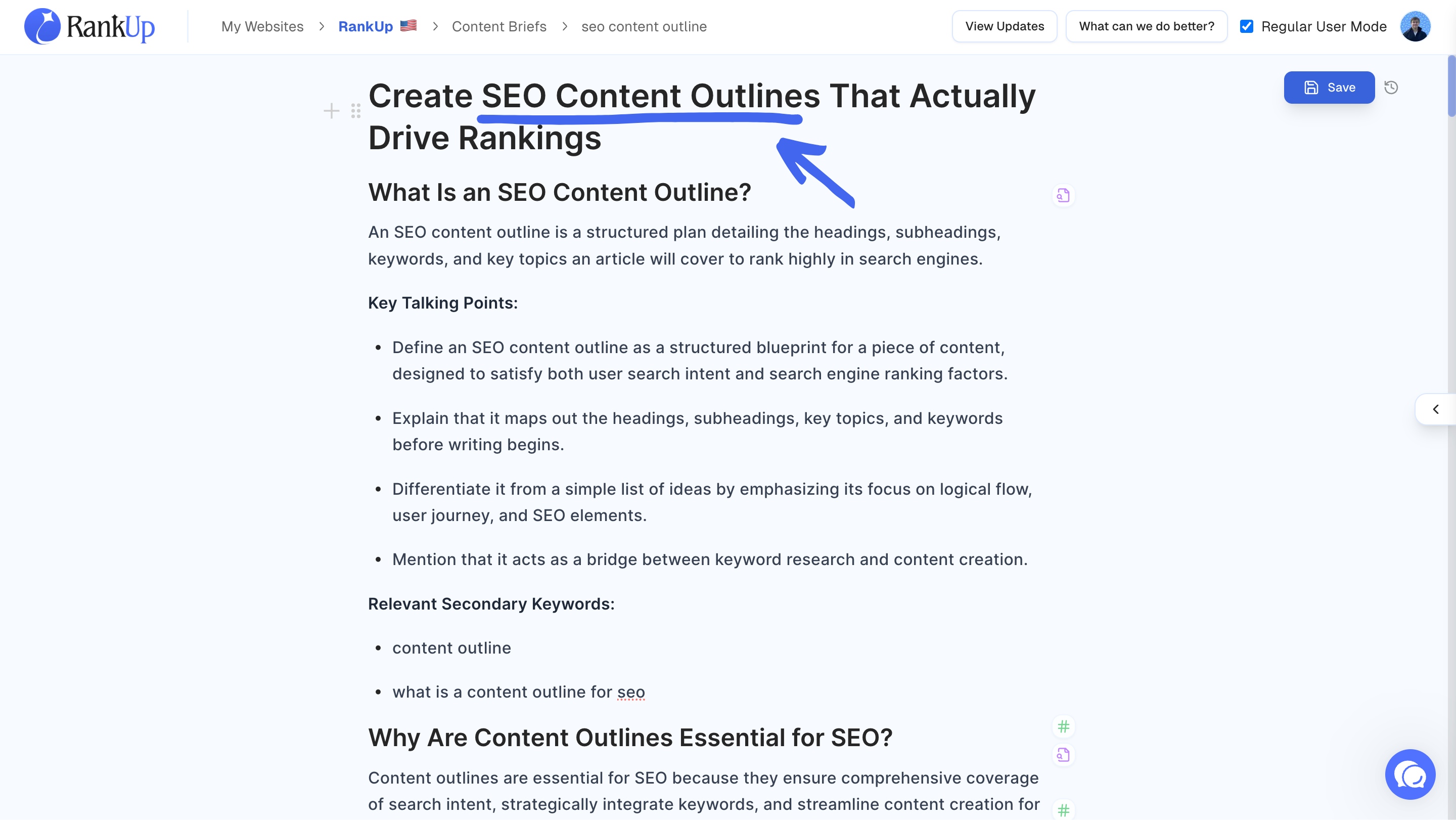 This is the main focus of your piece and the phrase search engines will most closely associate with your page. It guides the overall direction of the article and helps writers stay focused on the main search intent.
This is the main focus of your piece and the phrase search engines will most closely associate with your page. It guides the overall direction of the article and helps writers stay focused on the main search intent.
Common Mistake to Avoid: When creating your SEO content brief, avoid targeting multiple primary keywords in a single piece of content. It splits focus and confuses both the writer and the algorithm.
Secondary Keywords
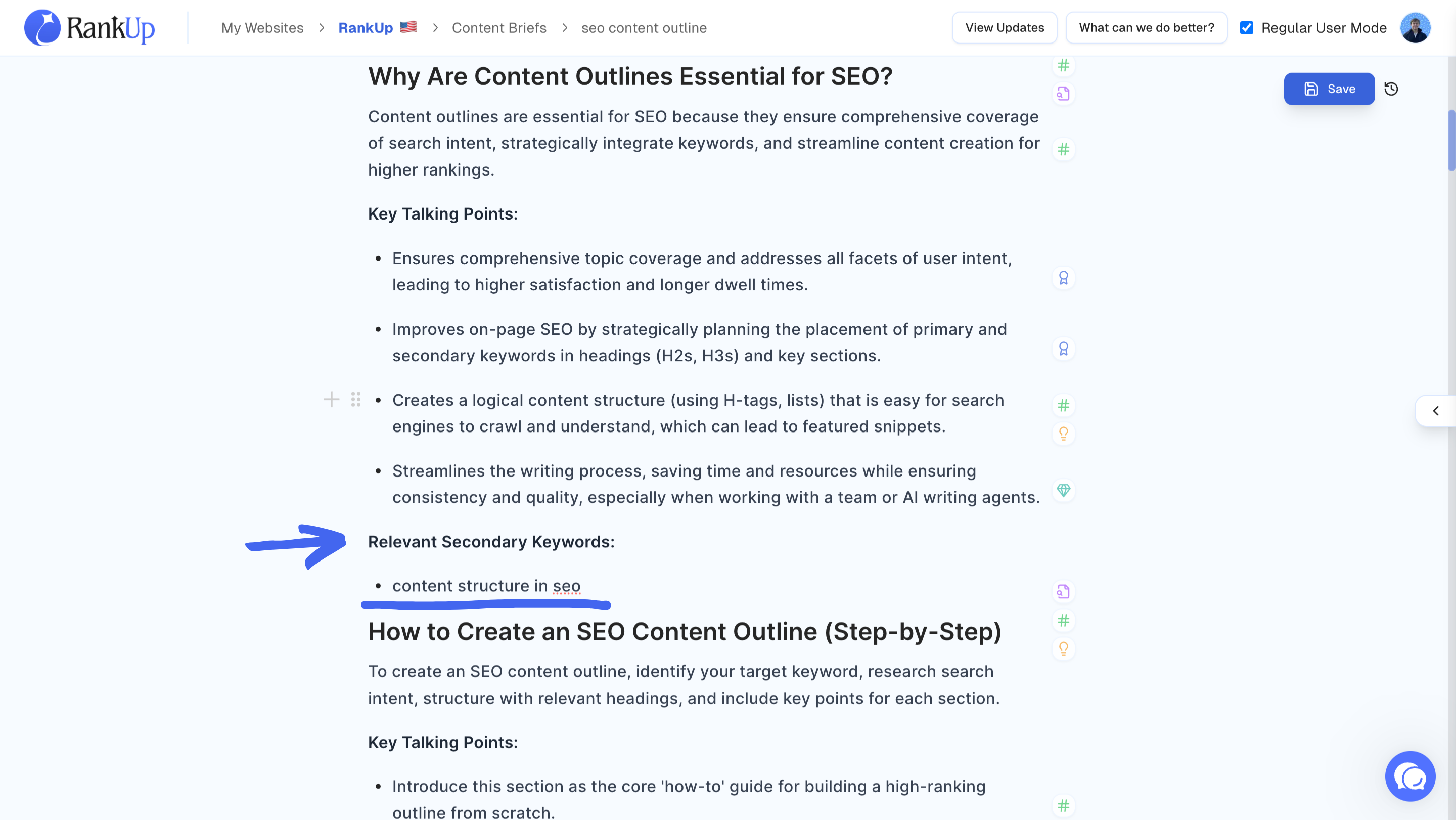 These are supporting ideas or phrases that naturally come up when people search for your topic. They help you cover related parts of the topic and answer the different questions people might have when searching.
These are supporting ideas or phrases that naturally come up when people search for your topic. They help you cover related parts of the topic and answer the different questions people might have when searching.
Common Mistake to Avoid: When including secondary keywords, avoid adding too many terms without considering relevance or natural flow. Overstuffing makes content sound forced and can hurt readability.
The goal is to include these keywords naturally, not force them in.
2. Target Audience and Search Intent
Your target audience is the specific group of people your content is meant for, while search intent explains what they want to achieve when they search.
Here’s why it’s important to include each element in your SEO content brief:
Target Audience
 Identifying your target audience keeps content focused and intentional. It helps writers understand who the content should serve, what problem it needs to solve, and what level of detail to go into.
Identifying your target audience keeps content focused and intentional. It helps writers understand who the content should serve, what problem it needs to solve, and what level of detail to go into.
In your SEO content brief, the target audience section prevents off-topic writing and ensures the final piece resonates instead of reading like generic advice.
Most businesses already have a clear picture of their target audience, so when putting together your content brief, instead of rebuilding personas for every blog post, focus on how your existing audience insights apply to the specific piece.
Ask yourself:
Which segment of our audience is this content for?
What challenge or question are they hoping this article will solve?
How familiar are they likely to be with the topic?
What outcome would feel valuable to them after reading?
When you answer these questions in your brief, writers can adapt tone, examples, and depth to match readers’ expectations.
Common Mistake to Avoid: Writing for a vague, general audience. This often leads to bland, unhelpful content that fails to engage or convert.
Search Intent
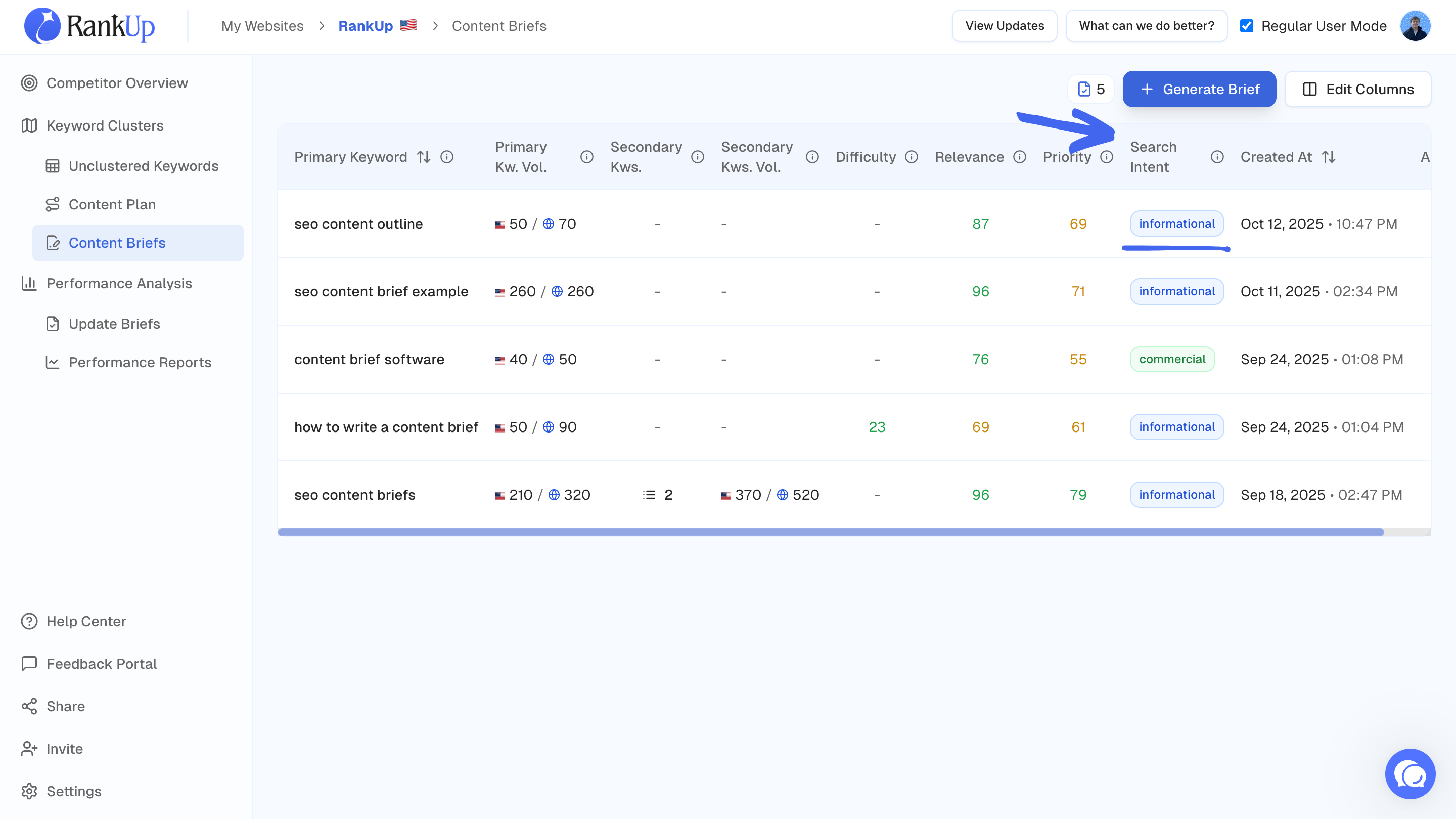 Search intent is the “why” behind every search. It reveals what the reader actually wants to find or do, and guides how the content should be written and what type of value it should deliver.
Search intent is the “why” behind every search. It reveals what the reader actually wants to find or do, and guides how the content should be written and what type of value it should deliver.
Including it in your content brief helps writers structure and frame content in a way that matches user expectations, increasing both engagement and rankings.
Here are the four main types of search intent to identify in your brief:
Informational - Learning something new, e.g., "how to optimize meta tags"
Navigational - Finding a specific website or page, e.g., "RankUp login"
Commercial - Researching before buying. e.g., "best SEO tools 2025"
Transactional - Ready to take action, e.g., "buy SEO audit software"
Once you understand what your audience wants, you can then tailor your writing style to match what readers expect to find. For instance, informational content needs clear explanations and helpful examples, while transactional content focuses on benefits and removes buying friction.
Common Mistake to Avoid: Ignoring intent alignment. If the content’s tone or structure doesn’t match what the searcher expects, for example, making an informational piece sound too promotional, readers will quickly leave, and rankings will suffer.
3. Detailed Content Outline
A content outline is the framework that organizes your article’s structure, flow, and key talking points. In an SEO content brief, it ensures the final piece is well-structured, covers all important subtopics, and aligns with what both users and search engines expect to see.
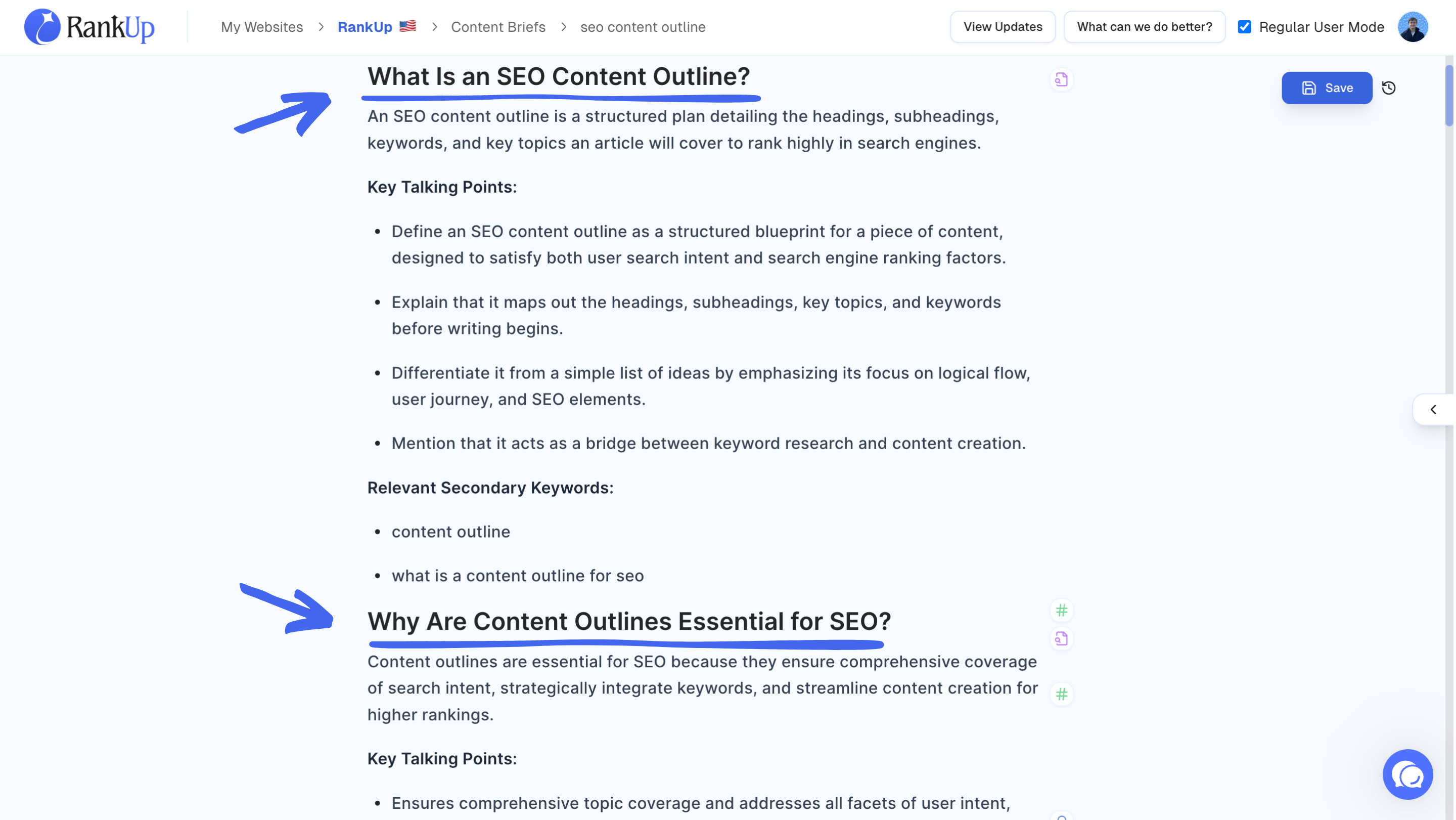 It’s an important element to include in your content brief because it helps writers see what order ideas should appear in, which questions to answer, and how to keep readers engaged from start to finish. Without it, even the best keyword research can turn into scattered, unfocused writing.
It’s an important element to include in your content brief because it helps writers see what order ideas should appear in, which questions to answer, and how to keep readers engaged from start to finish. Without it, even the best keyword research can turn into scattered, unfocused writing.
A strong content outline includes:
Smart heading structure - Use H2s and H3s that mirror what's already ranking on page one.
Value-focused sections - Sections should guide the reader by addressing specific questions, pain points, or themes your audience cares about.
Logical content flow - Ideas should connect smoothly from one section to the next.
Complete topic coverage - Headings should address angles competitors are covering, as well as those they missed.
Your outline ensures you don't miss important subtopics while keeping your content focused and easy to scan.
Common Mistake to Avoid: Placing the main ideas too far down the outline. This delays addressing user intent and makes the content feel unfocused.
4. On-Page SEO Elements
On-page SEO elements are the technical parts of your page, like titles, headings, and URLs, that help search engines understand what your content is about. In an SEO content brief, these details guide writers and editors to structure and format the article in ways that improve visibility and clicks.
Here are the essential on-page elements to optimize:
Page Title or Title Tag
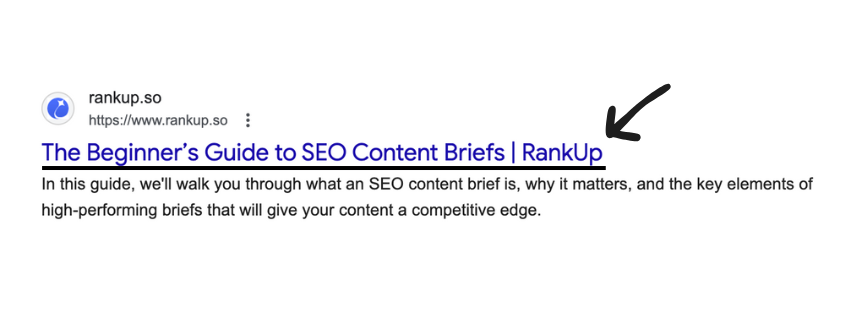 The page title is the clickable headline that appears in search results. It’s one of the first things both users and search engines see, and it helps determine whether someone clicks your result or scrolls past it.
The page title is the clickable headline that appears in search results. It’s one of the first things both users and search engines see, and it helps determine whether someone clicks your result or scrolls past it.
This element in an SEO brief clearly defines what the title should be, which keyword to include, and how to make it compelling.
Best practices for writing a page title include:
Keep it under 60 characters so it displays fully in search results
Place your main keyword near the beginning
Make it compelling enough that people want to click, for example, "Best Coffee Makers 2024: Expert Reviews & Buying Guide"
Common Mistake to Avoid: Avoid writing titles that are too long or vague, as they’ll get cut off in search results and lose clicks.
URL Structure
This is the web address for your page, for example, this article's web address is www.rankup.so/academy/seo-content-briefs. A good content brief should include guidance on how the URL should look, especially for target keywords.
This is because a clean, descriptive URL helps both users and search engines quickly understand what your page is about.
Best practices for creating URLs include:
Create clean, readable URLs with your keyword. Use hyphens to separate words, not underscores. Search engines treat hyphens as word separators but read underscores as one long word, which can make your URLs harder to understand and less SEO-friendly.
Keep it short and descriptive. If possible, just use the primary keyword in your URL.
Common Mistake to Avoid: Avoid using long, confusing URLs or unnecessary filler words, as they make it harder for both users and search engines to identify the topic.
H1 Heading
This is the main headline on the actual page and is different from the title tag. It includes the main keyword and reflects the content intent, telling readers and search engines what the article is about and setting the stage for everything that follows.
When writing H1 headings:
Use only one H1 per page
Include your primary keyword
Make it clear what the page is about
Match the intent behind your target keyword
Common Mistake to Avoid: Avoid using multiple H1s, as it confuses search engines about what the page is really about.
Image Optimization Guidance
This process involves making images SEO-friendly by optimizing alt text, filenames, and file sizes. Image optimization guidance is key in an SEO brief because search engines can’t “see” images. Instead, they rely on descriptions or alt text to understand them. Well-optimized images improve accessibility and can drive traffic through image search.
Image optimization best practices include:
Describe what's actually in the image
Include relevant keywords when they fit naturally
Keep alt text under 125 characters
Common Mistakes to Avoid:
Avoid skipping alt text as search engines and screen readers rely on it to understand images.
Avoid keyword stuffing or using generic filenames (like “image1.jpg”) because they waste opportunities to give context and improve discoverability.
All these on-page SEO elements work together to give search engines a clear picture of your content's topic and value. When done right, they maximize your visibility and click-through rates.
5. Competitor Analysis and Unique Angle
SEO competitor analysis involves studying the top-ranking pages for your target keyword to understand what’s already working. Looking at their structure, topics, tone, and level of depth helps you see what kind of content Google already rewards and where there are opportunities to improve.
Beyond identifying what works, competitor analysis also helps you define your unique angle. This is the distinctive approach that sets your content apart. It’s the fresh perspective or added value your piece offers that others don’t, and helps your content stand out by offering something more relevant, current, or insightful than the rest.
In a content brief, this section’s job is to guide writers toward differentiation. It shows them how to use existing examples as reference points, but also where and how to go further.
To conduct SEO competitor research, start by examining the top 3-5 URLs currently ranking for your target keyword.
Look beyond surface-level content to understand their strategies:
Content structure - How do they organize information and break down complex topics?
Depth of coverage - Which subtopics do they prioritize and which ones do they skip?
Content format - Are they using lists, step-by-step guides, or comparison tables?
User engagement elements - Do they include interactive features, videos, or downloadable resources?
Next, identify where competitors fall short. Common content gaps include:
Outdated information or statistics
Missing subtopics that users actually search for
Shallow coverage of essential points
Poor user experience or confusing navigation
Lack of practical examples or case studies
Your unique angle becomes the bridge between what competitors offer and what users truly need. This might involve:
Fresh data or research - Conducting original surveys or analyzing recent industry trends
Comprehensive coverage - Addressing all the subtopics competitors missed
Better user experience - Creating clearer explanations, better visuals, or more actionable advice
Updated perspective - Incorporating recent changes in your industry or new best practices
This kind of research helps writers create content that goes beyond matching competitors and instead addresses genuine gaps in the market.
Common Mistakes to Avoid:
Don’t copy your competitors' structure too closely. You risk blending in. The goal is to stand out by enhancing what already exists.
Don’t analyze irrelevant competitors or big brands ranking for different intents. Use the top-ranking results for your keyword to get relevant insights.
Don’t forget about your readers. A unique angle should serve readers, not just search engines. If your distinct angle doesn’t make the content more relevant or practical, it won’t add value to your readers.
6. Internal and External Links
Internal links are links that connect one page on your website to another. External links, on the other hand, point from your site to other trusted websites.
Both help search engines and readers better understand your content, but they serve different purposes. Internal links build your site structure and distribute authority across pages, while external links improve credibility by referencing reliable sources.
Let’s look at why exactly it’s important to include internal and external links in your content brief:
Internal Linking
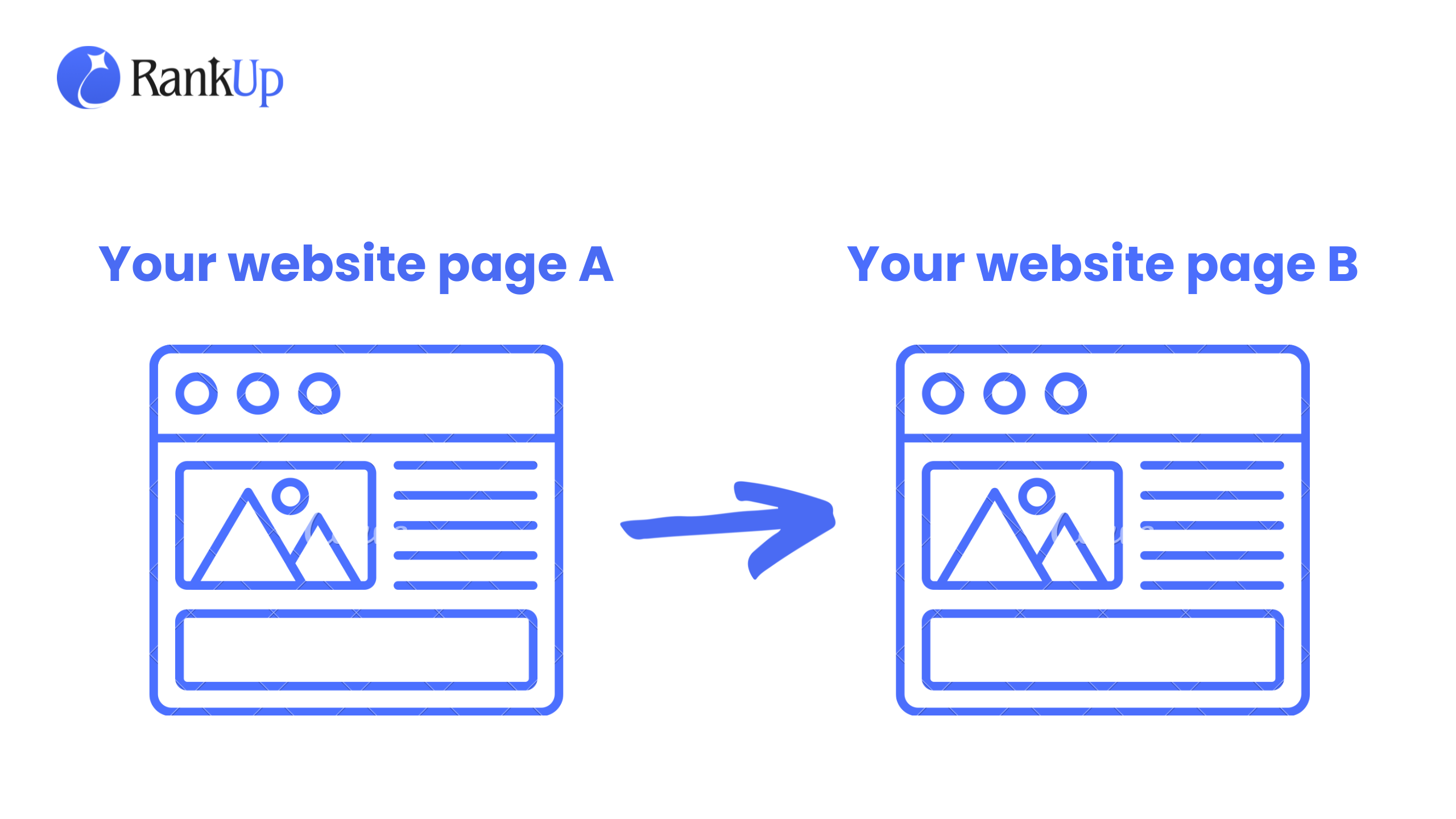 Internal links are a key part of a content brief because they show writers how each new piece fits within your website’s content ecosystem. They guide users to related resources, keeping them on your site longer, and helping search engines discover and prioritize your most important pages.
Internal links are a key part of a content brief because they show writers how each new piece fits within your website’s content ecosystem. They guide users to related resources, keeping them on your site longer, and helping search engines discover and prioritize your most important pages.
Your SEO content brief should map out these connections before you start writing. Look for opportunities to:
Link to your most important pages that need authority boosts. This includes revenue page(s) (such as the homepage, pricing page, etc) and pillar pages (the main, in-depth page that covers a key topic on your site).
Connect related topics that help users find more valuable content
Use descriptive anchor text that tells both users and search engines what to expect
Common Mistakes to Avoid:
Don’t link randomly without context, as this confuses readers and weakens SEO value.
Avoid reusing the same anchor text when referencing different pages, as this can be perceived as spam by search engines.
External Linking
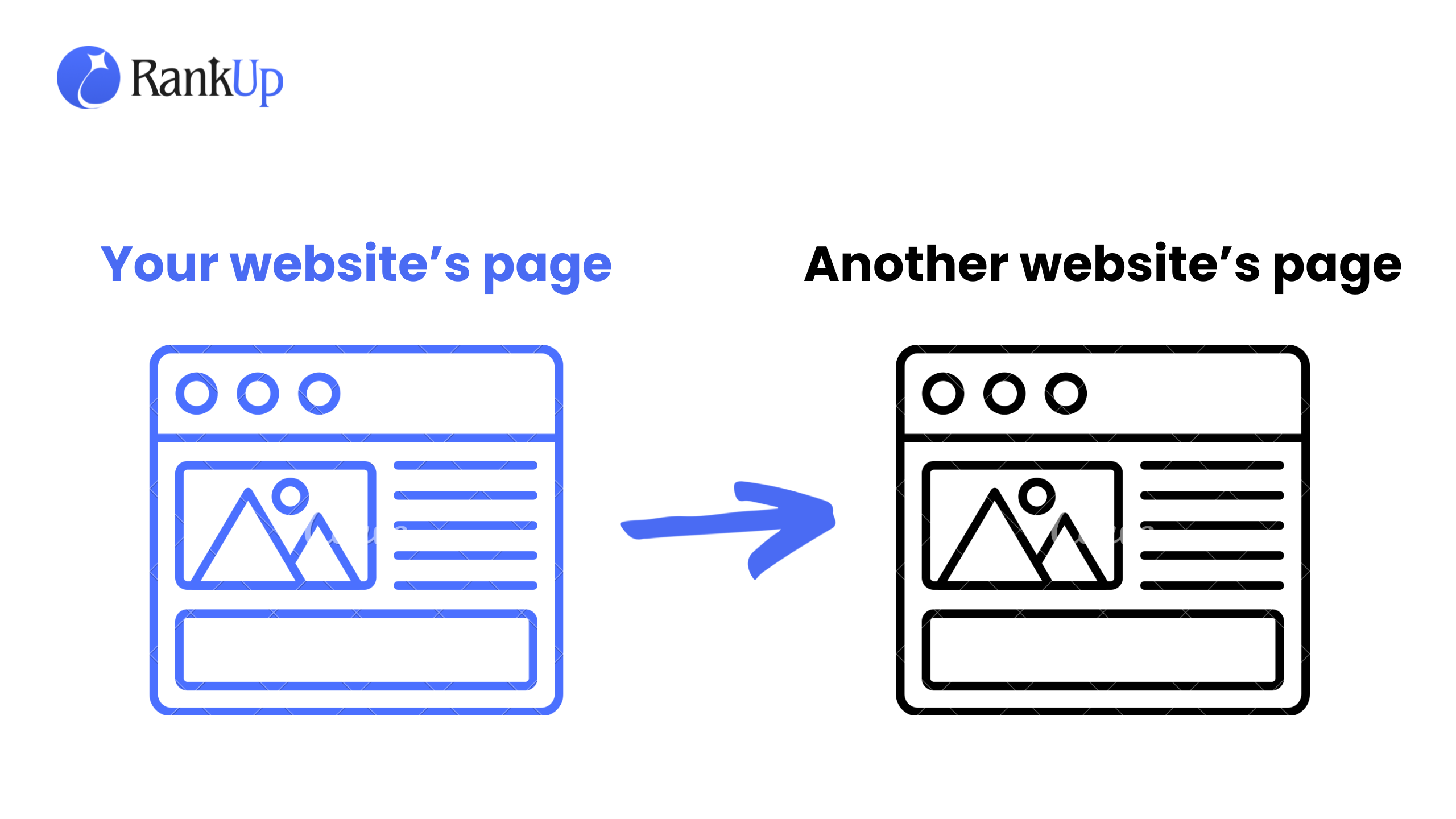 External links are also essential in a content brief because they help your content earn trust. Linking to authoritative, non-competing sources shows you’ve done your research and adds credibility to your claims. It also signals to search engines that your page is well connected to relevant, high-quality information on the web.
External links are also essential in a content brief because they help your content earn trust. Linking to authoritative, non-competing sources shows you’ve done your research and adds credibility to your claims. It also signals to search engines that your page is well connected to relevant, high-quality information on the web.
When including external links in your brief, ensure you identify:
2-3 authoritative sources that add genuine value to your content
Non-competing websites that complement your points
Recent studies or data that support your arguments
Specific sections where these links make the most sense
The key is being selective. Every external link should earn its place by making your content more helpful or trustworthy.
Common Mistakes to Avoid:
Avoid linking to low-quality or outdated sources, as this reduces your page’s credibility.
Avoid including too many external links, as they can distract readers and cause them to leave prematurely.
Don’t link to competitors. This can weaken your own authority and visibility.
What Should You Not Include in a Content Brief?
A well-crafted content brief should not include excessive brand background, rigid keyword frequency rules, vague goals, fixed word counts, or conflicting tone instructions. These items confuse writers, waste time, and weaken the content’s chance to rank or convert.
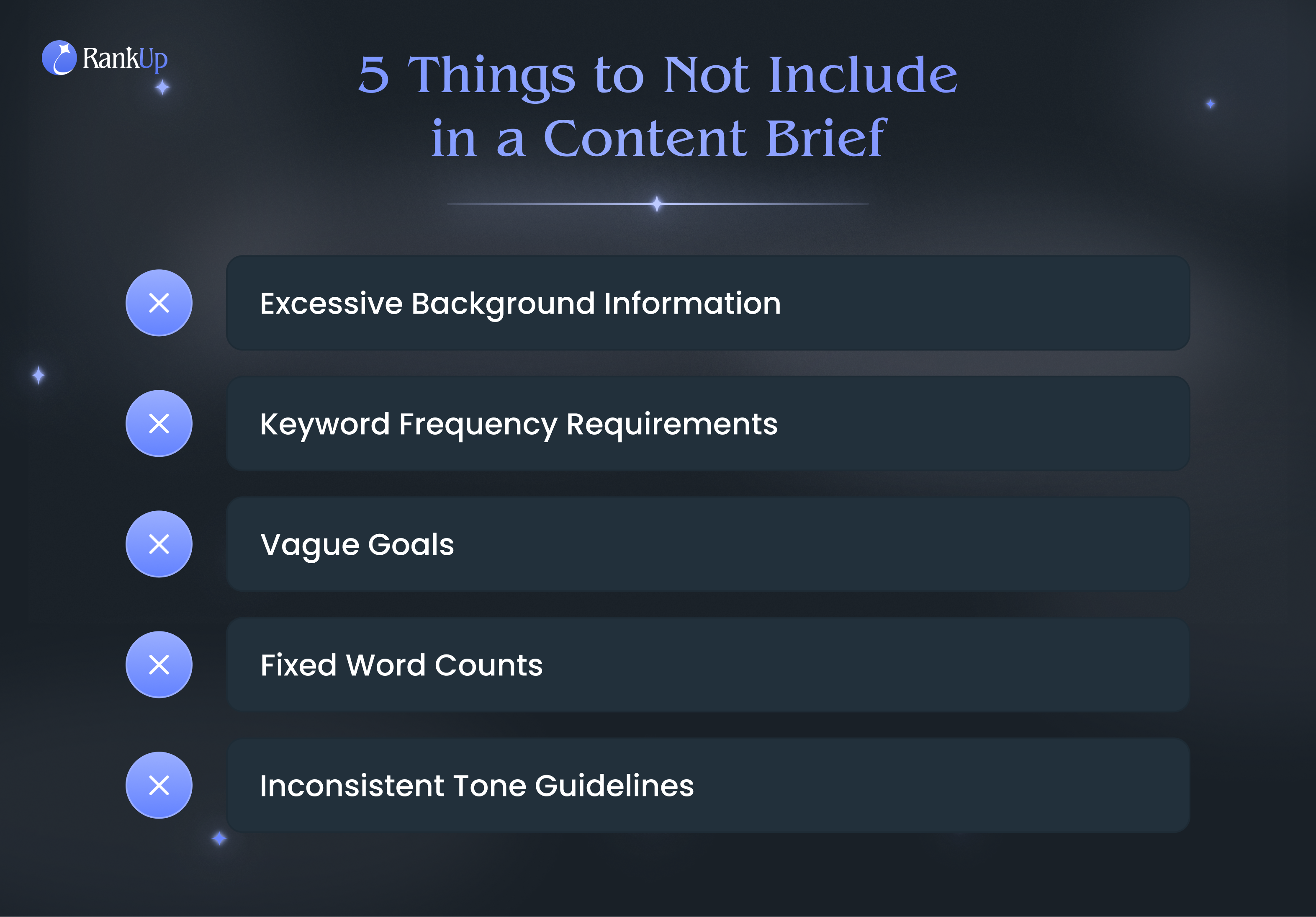 Let’s take a closer look at the elements that can hurt your content’s quality, and why they should be avoided:
Let’s take a closer look at the elements that can hurt your content’s quality, and why they should be avoided:
Excessive Background Information
Your brief shouldn't read like a company encyclopedia. Writers don't need your entire brand history or unrelated background details that don't connect to the content goals.
Stick to relevant context that directly supports the piece you're creating.
Too much background information overwhelms writers and buries the essential details they actually need.
Keyword Frequency Requirements
Don’t tell writers to use a keyword as many times as possible or give rigid frequency requirements like “include this keyword 15 times.” Overloading content with exact-match keywords makes it sound robotic, frustrates writers, and can even hurt rankings.
Instead, highlight your target keywords and explain their importance, while encouraging natural usage and variations that fit smoothly into the flow of the content.
Vague Goals
"Make it engaging" or "drive traffic" aren't real objectives. Vague goals leave writers guessing about what success looks like for your content.
Be specific about what you want to achieve, whether that's generating leads, answering customer questions, or ranking for particular keywords.
Clear goals give writers a target to aim for throughout the writing process.
Fixed Word Counts
Don't include strict word count requirements without context.
For example, a 2,000-word minimum might make sense for an in-depth guide, but forcing that length on every piece leads to unnecessary fluff and frustrated writers.
More importantly, research shows that Google doesn't rank content based on word count. What matters is covering the topic thoroughly and meeting search intent.
Inconsistent Tone Guidelines
Avoid contradictory tone instructions like "be professional but casual" without clear examples. Mixed messages about voice and style create confusion that shows up in the final content.
Provide specific, consistent guidance that writers can follow confidently.
When you eliminate these common brief mistakes, writers can focus on what matters most: creating content that serves your audience and achieves your goals.
RankUp: The Smarter Way to Create Content Briefs
RankUp is an AI-powered SEO platform that automates the entire SEO content creation workflow, from keyword research to brief generation and first drafts. It’s the smarter way to create content briefs because it eliminates guesswork, saves hours of manual work, and ensures every piece of content is built to rank.
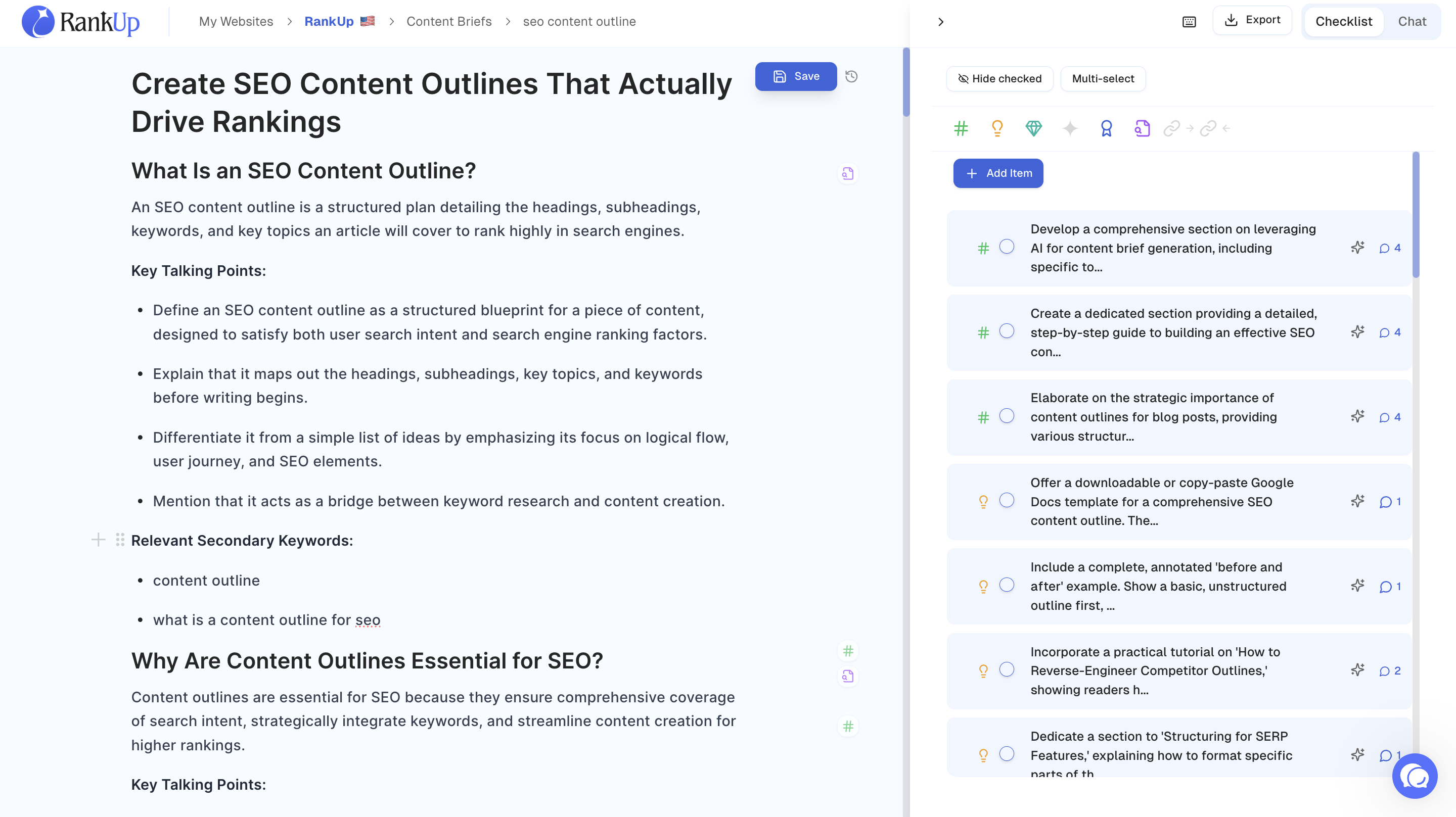 Here's how it transforms your workflow:
Here's how it transforms your workflow:
Advanced Keyword Research & Clustering - Instead of spending hours gathering and sorting keywords, RankUp automatically identifies high-value keywords, organizes them into related groups, and uncovers content gaps your competitors miss.
Effortless Content Planning - Manual planning often involves spreadsheets and disconnected tools. RankUp lets you organize, prioritize, and map topics in one place, giving your team a clear, unified content plan.
Complete Brief Generation (Single or Bulk) - Building briefs manually can take hours per piece. RankUp creates detailed, SEO-ready briefs in minutes, complete with everything you need, so you can move from research to writing instantly.
AI-Assisted Content Creation - While traditional workflows require starting every draft from scratch, RankUp’s Writer Agent turns your briefs into structured, on-brand first drafts that only need refining.
With RankUp, teams skip repetitive setup tasks and focus on strategy, creativity, and quality, not busywork. If you also believe that the best results come from focusing on both quality and quantity, not just one or the other, you might want to check out what RankUp can do for you.
Big Idea: Behind Every High-Ranking Content Is a Detailed Content Brief
Great content begins with a strong brief. When your team has clear direction on keywords, audience, and intent, it’s easier to create pieces that not only get written faster but also perform better in search. And while building briefs manually can eat up hours, the right tools can simplify and streamline the process.
Ultimately, a solid SEO content brief is more than just an outline. It serves as the blueprint that ensures your content gets discovered, shared, and remembered, driving real results for your business.
FAQs
What is the difference between a content brief and an SEO content brief?
A general content brief focuses on the topic, audience, and brand voice. An SEO content brief includes all of that but adds a layer of data-driven instructions based on SERP analysis, such as primary/secondary keywords, competitor outlines, and specific on-page SEO elements, with the primary goal of ranking on search engines.
How do you create an SEO brief?
You create an SEO brief by first analyzing the top-ranking pages for your target keyword. From there, you define the search intent, build a competitive outline, identify key terms to include, and specify on-page SEO details like the meta title and description.
What is a content marketing brief?
A content marketing brief is a broader document that outlines the purpose of a piece of content within a larger marketing campaign. While it includes audience and goals similar to an SEO brief, it may also specify distribution channels, campaign messaging, and conversion goals that extend beyond just organic search performance.
